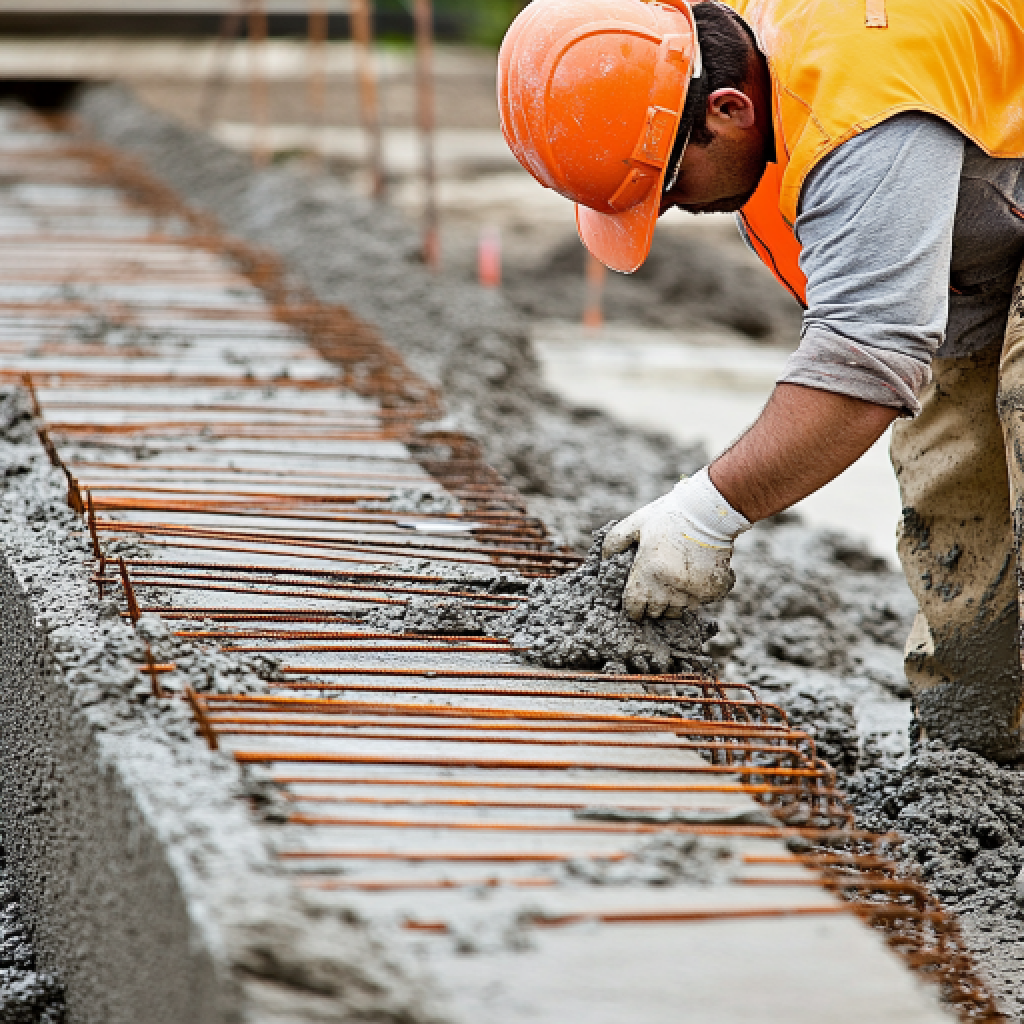How to Accurately Figure Cubic Yard Measurements for Your Projects?
In the construction industry, precise measurement, material handling, and effective project management all depend on an understanding of the figure cubic yard. The yard cubic measurement is a common unit of Volume, regardless of whether you are working with bulk materials like gravel, soil, or concrete. The definition, uses, computation techniques, and importance of yard cubic in the construction sector are all in detail in this article.
What is Yard Cubic in Construction?
Professionals are also yard cubic as a cubic yard – it is actually the unit used for Volume in the construction world, particularly when contractors or engineers deal with bulk materials. The exact definition is described as follows: a cubic yard is the amount of material that fits a 3 x 3 x 3-foot box. In simple words, figure out cubic yards is the volume of a cube that has three-foot sides.
This unit is frequently used to measure bulk materials such as concrete, landfills, and earth materials. From excavation and grading to foundation pouring and landscaping, it gives laborers a useful way to measure and oversee the materials needed for large-scale projects.
Formula Of Calculation The Figure Cubic Yard
Any material’s cubic yard is calculated with the following formula:
Figure Cubic Yard (yd³)=L x W x H / 27
Where:
L = Length in feet
W = Width in feet
H = Height in feet
As you know
3 feet x 3 feet x 3 feet = 27 cubic feet
Therefore,
27 cubic feet = 1 cubic yard
Builders use this formula when figuring out concrete yardage and determining how much material is required for multiple tasks, such as masonry, concrete pouring, paving, landscaping, etc.
What Makes Yard Cubic Valuable for Construction Projects?
It is impossible to overestimate the significance of comprehending and precisely calculating the figure cubic yard in construction. It fulfills a number of crucial functions that enhance construction projects’ effectiveness, precision, and success:
Effective Purchasing of Materials
Accurate material estimation is crucial in construction to prevent ordering too much or too little. With an accurate cubic yard, contractors can precisely measure the amount of concrete, gravel, soil, or sand they require. This measurement allows contractors to place more accurate orders with suppliers and ensure that the correct amount of material arrives at the job site.
Expense Control
Precise yard cubic calculations are also essential for cost control. A proper calculation guarantees that contractors only pay for the quantity they require rather than ordering extra materials that will be unused, as construction materials are frequently sold by the cubic yard. It is particularly crucial for large-scale projects, where cutting waste can drastically reduce project expenses.
Scheduling and Planning for Projects
Project planning is easier when one knows the amount of material needed for yard cubicles. With accurate yard estimator, contractors can more efficiently schedule labor and deliveries, reducing downtime and preventing delays. As a result, operations run more smoothly, and the project moves forward according to schedule.
Reduction of Waste
When the proper amount of material is employed, the amount of waste or leftover material decreases. Accurate yard cubic calculations help contractors avoid over-ordering or over-excavation, which lessens the project’s environmental impact and encourages sustainability.
Process Of Measuring The Accurate Figuring Cubic Yards
Cubic yard measurements are the most essential thing to measure different materials. Here is the process of how to determine it:
Get the Tools You Need
Getting the required equipment together is crucial before beginning to determine the cubic yards to cubic feet of space. Experts use multiple tools during the calculation depending on the specifications of the area’s size and shape.
They use measuring tape to determine the height, width, and length of the area. When doing a task, like calculate cubic yards of concrete, they use a calculator, which is recorded using pen and paper or digital tools.
Measure Space
After gathering the required equipment, the next step is measuring the area. Accurate measurements are necessary to guarantee that cubic yards are calculated correctly.
Measuring the length, width, and height comes first in the process.
For rectangular space:
Area = Length x Width
For an irregular area:
Divide the total area into smaller parts in rectangles or squares
Get the area of each part using the formula
Area = Length x Width
Add up all the area
Area 1 + Area 2 + Area 3 +…..
Calculate the volume of the rectangular area
Volume (cubic feet) = Length x height x width
Convert volume to cubic yard
Cubic Yards (yd³) = Volume (Cubic feet) / 27
Getting the required equipment and taking precise measurements of the area are essential steps in getting ready for the figure cubic yard calculation.
Accurate measurements and the appropriate tools allow for a simple and accurate calculation of the cubic yard to square feet process.
CubicYard Calculation for Various Shapes
A straightforward formula applies to determine the Volume of a rectangular space. The procedure can be more difficult when figuring concrete yardage the Volume of irregular shapes or circular spaces. We will go over how to compute cubic yards for various shapes in this section.
Rectangular Spaces
Determine the Volume of the rectangular area to get length, width, and height. Once you have these, you will put the values in the format to get the desired number.
Suppose you have a rectangular space with the following dimensions.
Length = 10 years
Width = 5 yards
Height = 2 yards
Put all these values in the format and get your calculations.
Also Read : What is Elemental Cost Analysis?
Circular Spaces
A different formula is crucial to calculate the Volume of a circular space. You must know a cylinder’s Height and radius in order to calculate its Volume. The following formula you should use to determine a cylinder’s Volume: For instance, the calculation would be as follows: if you had a circular space with a radius of five yards and a height of two yards.
Irregular Shapes
Measuring the area of an irregular space can be challenging. Therefore, it is suggested that the large area be divided into smaller, easier-to-maneuver parts.
An additional technique is to make a digital model of the shape with modeling software or a 3D scanner. The software’s tools can then be used to determine the Volume.
In conclusion, different formulas and techniques are vital to figure cubic yards for various shapes. By knowing these formulas and techniques, you can calculate the Volume of any space, regardless of shape.
Apply the Calculations
After determining the cubic yardage of the project, the information is applied to it. The ensuing subsections give examples of how to use the calculations for waste removal, construction materials, and landscaping projects.
For Landscape Projects
Determining the amount of the required material becomes essential when working on a landscaping project. A project manager can employ a cubic yard calculator to find how much mulch is required for an area of 20/30 feet, layering 2 inches.
Let’s take an example.
L= 20 ft
W= 30 ft
Using the cubic yard calculator, first, calculate the area
Area = length x width
Area = 20 x 30 =600 sq ft
One cubic yard of mulch will cover 324 square feet of area at a depth of 1 inch.
Calculate the volume with a 1-inch depth.
Volume (Cubic Yard) = Area x Depth /324
However, for a depth of 2 inches, the calculations will be like
Volume = 600 x 2 /324 =3.7 cubic yard
Regarding Construction Supplies
Concrete, sand, and gravel are essential landscaping materials. Quantify them to support you stay on track with your project.
Suppose a contractor has a 4-inch-thick slab of 12 ft/16 ft for pouring. He must be thinking about how to figure yards of concrete for this project.
Using the cubic yard calculator, one cubic yard of concrete will cover 81 square feet to cubic yards at a depth of 4 inches, assuming that the concrete is 4 inches deep. In order to pour the 12-by-16-foot slab, the contractor will, therefore, require roughly 2.96 cubic yards of concrete.
For the Removal of Waste
For a site cleaning project, you must determine how much waste to remove and apply the most suitable disposal method. Again, a project manager can use a cubic yard calculator to determine how much yard waste should be removed, considering leaves, branches, etc.
To use a cubic yard calculator, pile the waste in rectangular shapes with the following specifications.
L= 10ft
H= 3ft
W= 15 ft
Apply formula.
Volume = L x W x H = 10 x 15 x 3 = 450 cubic feet
Now convert cubic feet into cubic yards.
Cubic Yards = Cubic feet / 27
Cubic Yards = 450 /7 =16.67 cubic yards
Pro Tip: Use the cubic yard extra lump sum mortgage payment calculator to get the exact values with minimum chances of error.
Cubic Yard Measurement Applications in Construction
Landscape Projects
Understanding how much mulch or soil is necessary can significantly improve the project’s efficiency and design in landscaping. To estimate the amount of material needed for planting beds, decorative elements, and other projects, landscapers frequently use cubic yards.
Also Read : How to Bid on Construction Jobs and Win Projects
Concrete Construction
Knowing cubic yards is crucial for pouring slabs, foundations, and other structures in concrete projects, ensuring that the proper quantity of concrete by the yard is mixed and delivered. This measurement helps reduce waste and extra expenses
Grading and Excavation
When working on an excavation and grading project, it is essential to know how much earth must be moved for perfect construction. This will ensure that the project stays within budget. Precise cubic yard computations assist contractors in figuring out how much material they need to move and how much space their equipment can hold.





